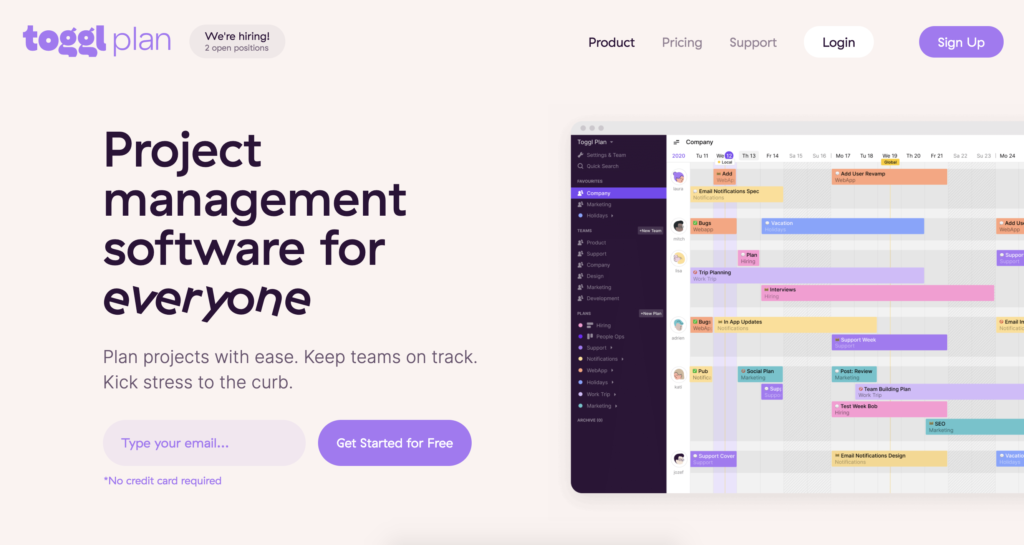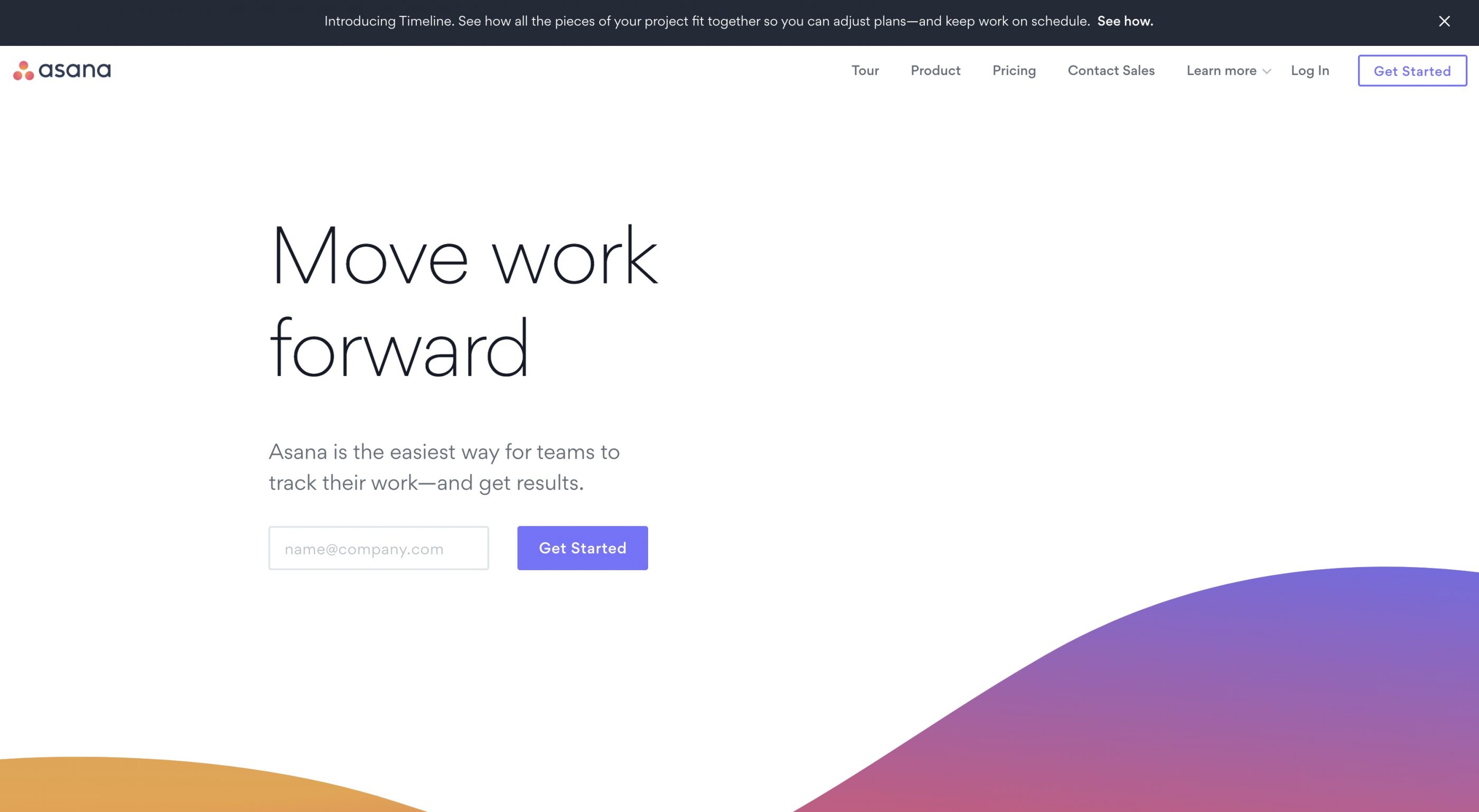It’s 4:30 p.m. on a Friday, but the paperwork is piling up on your desk and incoming emails are creating a to-do list that will be longer than your arm by Monday. To make matters more complicated, you aren’t sure how to properly distribute this workload among your team. Who is too busy? Who isn’t?
If you’re in the above situation, I feel for you. I have been there many times, and would probably still be doing mental cartwheels if my agency hadn’t adopted workload management software. I’d even go so far as to say that for project managers, workload management tools are the greatest asset since strong coffee. Maybe even better.
Why is Workload Management Important?
An overwhelming workload has been identified as one of the top reasons why employee performance goes down, and when your entire team is struggling to cope, you can imagine the outcome. As the project manager, it is your responsibility to ensure that everyone stays on top of their workload. When they do, the team succeeds.
I’ve been doing project management for a long time, so I’m aware that pressures can build up in the workplace. For example:
- Changes to project or even job description, making it necessary to learn new skills and change your approach to the assignment.
- New team members or a new project manager, which can cause a temporary disruption in the way you work.
- Miscellaneous project-related changes such as new deadlines, absent team members, and lack of immediate resources.
Since it’s impossible to prevent these pressures, let workload management software help you and your team deal with them in a more efficient manner.

What Is A Workload Management System?
Workload management systems are tools that enable you to strategically distribute a project workload across your team according to each person’s skill, ability, and availability. The goal is to give everyone tasks that they know how to accomplish and can reasonably be expected to complete within the allotted time frame.
In the not too distant past, project managers relied on dynamic spreadsheets to help them manage team workloads. They did the trick when everyone worked in the same office and updating the sheet was a (comparatively) simple matter of sending an email request for updates from everyone, but then remote teams came along and browser-based workload management tools made more sense. Now you have a lot of them to choose from, every one of them designed to help you stay on track when deadlines change, more work is piled on, or the project takes an unexpected detour.
Workload Management Software
Digital resource management tools have come a long way since we relied on Excel for nearly all of our project planning and tracking needs. The software brands below are used by in-house and remote teams across the globe, enabling better communication, collaboration, and workload allocation than ever before.
Toggl Plan

Toggl Plan is a beautiful, web-based project management tool with powerful workload planning capabilities. You can create color-coded Gantt charts to serve as project timelines and maintain an accurate overview of every team member’s responsibilities, even if they are engaged on multiple projects. You will be able to tell when their plate is getting too full and who has the availability to help them with the workload.
Other features include:
- A clean and attractive interface that you can start using right away: no coding ability required.
- Drag and drop functionality for quick and easy resource assignment and task scheduling.
- Sort team members into groups, with separate timelines for each group.
- Integration with leading project management tools such as Basecamp, Trello, and Asana. You can send tasks from within any of these apps to Toggl Plan, which is a huge bonus if you work with freelancers and remote workers who may not use Toggl Plan.
- A Chrome and Firefox extension (Toggl Plan Button) that lets you create a task on any page you visit with the click of a button.
Toggl Plan users include Buzzfeed, Spotify, and National Geographic, which indicates that it’s powerful enough to meet the workload management needs of mega-companies as well as small to mid-sized businesses. We use it at my agency, and refer to the TBT (time before Toggl Plan) as the ‘Dark Ages.’
The free version for solo users, but if you expand, the price starts $8/user per month.
Trello

Although Teamweek is my workload management tool of choice, I’ve used Trello as well and love its presentation. I’m one of those people who used to litter their computer monitor with sticky note reminders, and Trello looks like one big virtual sticky note collection.
When I worked at another agency, we used it to manage our software and app development projects. We had separate Trello boards for WIPs, completed milestones, and backlogged items that required extra focus. Like Teamweek, you can click onto an item like a card and start typing, and then click and drag the completed card in the required position. It’s super easy to define a top level project and then layer in a hierarchy of task cards necessary to achieve it.
Other features include:
- File attachments up to 10 MB.
- Integration with a wide variety of apps, such as Salesforce, Slack. Jira, and Google Drive.
- Ability to add simple automation to everyday tasks.
- Export team data with the click of a button.
- Create cards and add card comments through email. You can send attachments or reply to emails without having to log into Trello.
The free version is rich with powerful features, but if you want to go a step further, Trello Business is only $9.99 a month and lets you customize your backgrounds, use premium stickers, attach files up to 250MB in size, and apply an observer’s security setting that limits a user’s interactions on a board. There is also an Enterprise plan designed for larger companies that have to manage projects across multiple teams: pricing 2019 starts at $20.83 per user for 100 users.
Asana

I only worked with two clients who insisted on using Asana as a project platform, and found it simple to set up and use. Like all project management tools, you use it to create projects, divide them into tasks and subtasks, and spread the workload across your team. Everyone can see both their tasks and the bigger picture, which makes it easier to detect imminent bottlenecks and backlogs.
Features include:
- File attachments up to 100MBs.
- List, board, and calendar views available.
- Allows you to collaborate with up to 15 teammates.
- Clear overview of assignees and due dates.
- Integrates with leading workload and communication apps such as Litmus, Slack, Dossier, and Timecamp.
If you prefer to use a timeline and need to see task dependencies, you can upgrade to the Premium or Business plan, which are $9.99 and $19.99 per user per month and, depending on the plan you go with, also have access to custom templates, milestones, portfolios, and workload settings (Business plan only). If you have a team of 30 or more, you also get a customer success manager, who can help you create your projects and get the most out of them.
Wrike

I have colleagues who swear by Wrike and won’t use anything else. They’re in good company: Wrike is a project and workload management tool used by tech giants like PayPal and HTC. It has a spreadsheet view, so if you’re abandoning Excel for a more robust workflow management tool, this might be the one for you.
The free version of Wrike, which is available for teams of up to five people, includes the following features:
- Easy-to-use task management tools that require next to no learning curve.
- File sharing capability, which puts all project files on a single platform.
- A real-time activity stream that’s invaluable to project managers trying to prevent overload.
- Integrations with Google Drive, Dropbox, OneDrive, and other apps
- 2GB of storage space
The Professional version starts at $9.80 per user per month and provides you with access to Gantt chart timelines that support better workflow management, advanced integrations, shareable dashboards, and 5GB storage. Bigger companies might be better served with the Business plan, which costs $24.80 per user per month and includes some stronger workload management tools, like real-time reports, time tracking, and custom fields and workflows. If you work at a creative agency, you’ll be happy to know that there’s a Marketers package with access to Adobe Creative Cloud and a tailored workspace
Conclusion
When you have the right team workload management system for your environment, the work gets done while the team remains balanced and positive. Matching tasks to skill sets and creating achievable goals will keep your team members happy and motivated, and the ability to oversee individual availability ensure that work is evenly divided and no one is left with more than they can handle. You will wonder what you did without it (and try not to remember!)
Rose Keefe is an author and technical writer who has over ten years’ experience in supporting project managers in the manufacturing and construction sectors. One of her primary responsibilities was developing product manuals that supported efficient use of industrial equipment. She continues to write on the subject of time management and commercial productivity for trade websites and publications.

